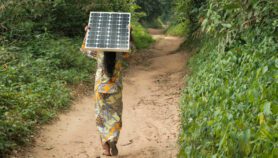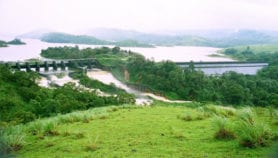By: Helen Mendes
Send to a friend
The details you provide on this page will not be used to send unsolicited email, and will not be sold to a 3rd party. See privacy policy.
[CURITIBA] Brazilian researchers say they have come a step closer to harnessing the power of ambient electricity that causes lightning and has the potential to become a source of clean energy.
Early research has indicated it may be possible to develop devices that can capture ambient electricity, much as solar panels capture sunlight, while also preventing lightning before it can discharge, researchers said at the National Meeting of the American Chemical Society in Boston, United States, yesterday (25 August).
Previously scientists thought water droplets in the air carried no charge, but a team led by Fernando Galembeck, from the Institute of Chemistry at the State University of Campinas (Unicamp), Brazil, found in laboratory experiments that air humidity and dust can accumulate electrical charges.
The electrical charge can transfer to other materials, in what is effectively a power source, called ‘hygroelectricity’ — electricity that comes from air humidity.
The results were "unprecedented and rather unexpected", said Galembeck. However, practical applications might be years away. "We are certainly far from it," he said, adding that more work is needed to scale up the devices.
Ildo Sauer, one of the directors at the Electro-technical and Energy Institute at the University of Sao Paulo (IEE), Brazil, said the basic processes of energy conversion involving ambient electricity had been known for centuries.
The possibility of using these energy fluxes could have two benefits: avoiding formation of the lightning, which can be hazardous, and harvesting electricity from a new source.
But Alexandre Piantini, researcher at the IEE, said that even if such devices could harvest energy from air, it was unlikely that they would prevent the formation of natural lighting and protect against its impacts.
He told SciDev.Net the challenge was to develop these findings into a safe technology at prices that were competitive compared with other alternative energy sources.
"Quite a few scientists in the past dreamt about this huge potential of electricity from the atmosphere," Teodoro Sanchez, specialist in renewable energies and rural electrification, and an advisor at development charity Practical Action, told SciDev.Net. But now it may become possible because of new sophisticated tools and knowledge.
Because atmospheric conditions that lead to lightning exist all over the world, hygroelectricity would be available universally, he said. If it can be developed for practical use "it could benefit families that have no access to electricity, especially those living in very isolated areas," he said.













